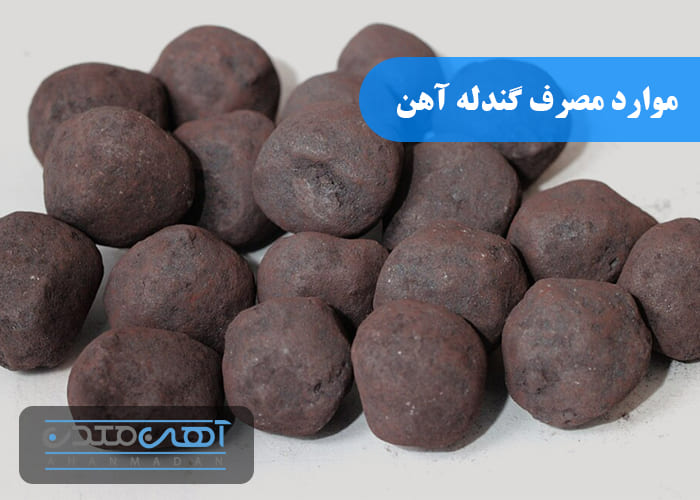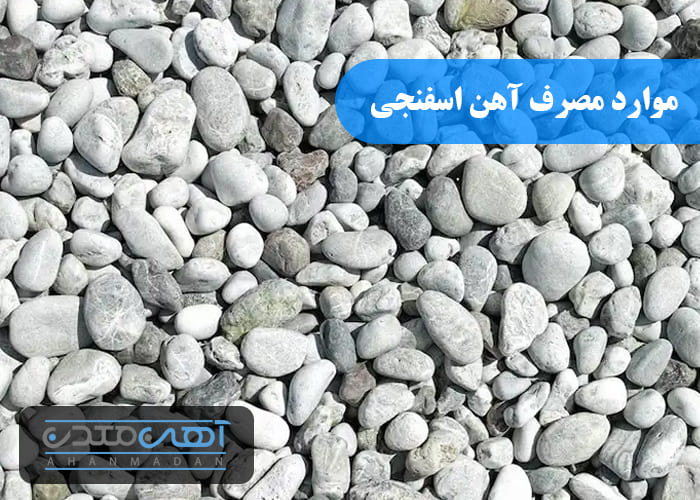Difference between pellet and sponge iron
If you are part of the manufacturing industry and are looking for the best raw materials for your product production, we will help you in this article to choose the most economical, best and most efficient material for your work. If you do not know what is the difference between pellet and sponge iron, then follow us to learn about the difference between these two materials in terms of their composition, properties and applications. Also, contact us today to learn more about purchasing iron pellets and our services and how we can help you meet your business needs.
Overview of the difference between pellets and sponge iron
Sponge iron and iron pellets are two popular raw materials used in production. Sponge iron, also known as reduced iron, is produced by reducing iron ore into pellets using non-coking coal in a rotary kiln.
Iron pellets, on the other hand, are produced by melting iron ore, coke (made from coal), and limestone in a blast furnace. The resulting liquid iron is then poured into a mold to form iron pellets.
?What is the difference between pellet and sponge iron
The main difference between sponge iron and iron pellets lies in their production process, composition, and properties. Sponge iron is a purer form of iron with a lower carbon content compared to pig iron. It has a higher melting point, is more resistant to oxidation, and is more malleable and ductile. On the other hand, iron pellets are more brittle, have a higher carbon content, and are less pure. Another difference between pellets and sponge iron is their cost. Sponge iron is cheaper to produce because it does not require coke, which is an expensive raw material used in the iron pellet production process. However, iron pellets have a lower melting point, which makes it easier to cast and shape into various shapes.
Table of contents
Uses of iron pellets
Iron ore has been an essential raw material in the manufacturing industry for centuries. Its versatility and strength have made it a popular choice for a wide range of applications. Iron ore is used in the production of steel, iron castings, pipes and wrought iron. It is also used as a raw material in the production of wrought iron and wrought steel, which is used in ornamental ironwork, railings and gates. One of the most common uses is in the production of cast iron, which is used in a variety of applications such as cookware, pipes and engine blocks. Iron ore is also used in the production of steel, which is used in construction, transportation and many other industries.

Properties of iron pellets
Iron ore is an alloy of iron, carbon, and other elements produced by smelting iron ore in a blast furnace. The properties of iron ore can vary depending on the specific composition and manufacturing process used. Here are some of the physical and chemical properties.
Physical Properties:
Boiling point: 2927 °C
Density: 6.9 - 7.8 g/cm3
Color: Dark gray to black
Melting point: 1150 - 1250 °C
:Chemical properties
Carbon content: 2.5 - 4%
Silicon content: 0.5 - 3.5%
Sulfur content: 0.05 - 0.15%
Manganese content: 0.1 - 2.5%
Phosphorus content: 0.1 - 2.0%
Iron pellet ingredients
Pig iron is a high-carbon ferrous material produced during the smelting of iron ore with coke and limestone. The composition of pig iron varies depending on the raw materials used and the smelting conditions, usually containing 3.5 to 4.5 percent carbon along with various other elements.
In addition to carbon, pig iron contains other elements such as silicon, sulfur, phosphorus, manganese and small amounts of other elements.
Silicon is usually present in concentrations between 1 and 3 percent, while sulfur and phosphorus are present in concentrations of 0.1 percent.
Manganese is usually present in concentrations up to 1 percent, and small amounts of other elements such as copper, nickel and chromium may also be present.
The process of producing iron pellets can be divided into four main stages:
Preparation of raw materials: This stage involves the extraction of iron ore and the preparation of other raw materials including coke and limestone.
Charging: The prepared raw material enters the blast furnace, which is then sealed and heated.
Reduction: The heat causes a chemical reaction, resulting in the iron ore being converted into molten iron.
Casting: The molten pig iron is then discharged from the bottom of the furnace and poured into pigs.
Read more: Iron Pellets

Uses of sponge iron
It contains manganese, sulfur, and phosphorus. The carbon content of sponge iron can vary depending on the reducing gas used and the reduction temperature. In general, sponge iron produced with natural gas has a higher carbon content than sponge iron produced with coal gas.
It is a very versatile product that has a wide range of applications in several industries. Some of the most common uses of sponge iron include:
Steelmaking: Sponge iron is commonly used in steelmaking as a substitute for scrap metal. It has a high iron content and low levels of impurities, making it an ideal raw material for steel production.
Foundry industry: Sponge iron is used in foundries to produce high-quality cast iron products.
Chemical industry: Sponge iron is used as a catalyst in the chemical industry to produce chemicals such as ammonia, methanol, and hydrogen.
Electric arc furnace: Sponge iron can be used as a coolant and energy source in electric arc furnace steelmaking.

Types of sponge iron
Sponge iron is a form of direct reduced iron produced by reducing iron ore in the form of lumps, pellets or granules using a reducing gas such as hydrogen, natural gas or coal.
Read more: Sponge Iron Production
Conclusion
Here you will find the difference between pellets and sponge iron, both of which have their own unique production processes and applications. Choosing between the two depends on various factors including intended use, cost, and availability. However, it is important to consider the environmental impact and sustainability of the selected material. If you are in the market for high-quality iron pellets, look no further than Iron Ore. With years of experience and expertise in the industry, you can trust us to provide you with the best pellets and sponge iron for your needs. Whether you need pellets or sponge iron for steelmaking or any other application, we are here to help. Contact us today to learn more about our products and services and how we can help you meet your business needs.
Communication bridges
Time table
Providing an official invoice
Shipping to all locations
Best price guarantee
Check sale
Taban Asia Steel Company, under the brand name of Ahan Madan, is a consortium of long-standing players in the steel industry, which, relying on the technical and specialized power and years of experience of the steel veterans working in these companies, works in the direction of meeting the needs of customers and their conscious purchase from the Iranian steel market. does Relying on our hardware support, such as a warehouse with an area of ten thousand square meters with a covered hall, supplying and trading all steel sections, providing valid certificates to guarantee the quality of products, support services until the moment of delivery, and also providing special services for the country’s manufacturing industries on an exclusive basis. , is trying to create a safe environment for consumers.
- All material and intellectual rights are reserved for this site
- Design and SEO of Taban Asia Steel Company



